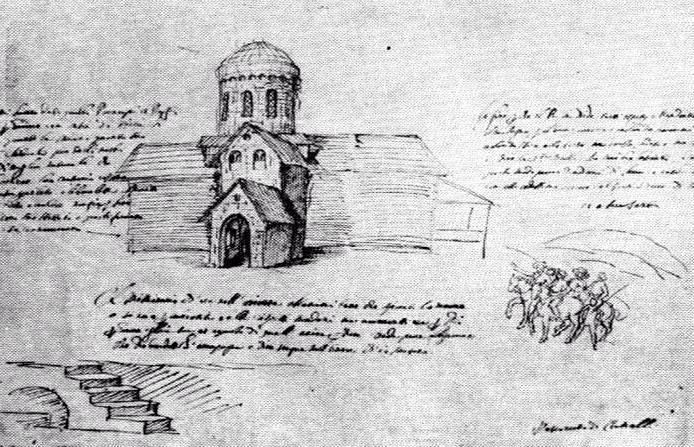Status Active | Architectural type Domed, single-nave Completed Early 11th century Number of domes 1 | |
 | ||
Similar Bedia Cathedral, Dranda Cathedral, Pitsunda Cathedral, New Athos Monastery, Rustavi Sioni | ||
ilori church
The Church of St. George of Ilori (Georgian: ილორის წმ. გიორგის ეკლესია) is a Medieval, originally Georgian Orthodox Church in the village of Ilori, in the Ochamchira District of Abkhazia, Georgia. The Church was built in the first quarter of the 11th century, and represents one of the most important sites of western Georgian architecture. It is also considered one of the more significant religious locations of Medieval western Georgia. The building has a single-nave design.
Contents
During its long history, the church underwent several important architectural modifications and was repaired by Levan II Dadiani in the 17th century, only to be burnt down by Ottoman Turks in 1736. The building was eventually restored again by the Princes of Odishi in the latter half of the same century.
On 9 February 2011, the Abkhazian government transferred the church into the perpetual care of the Abkhazian Orthodox Church.
2010 restoration controversy
In 2010, the church underwent restoration. According to the Georgian government, this resulted in severe damage to the church's historic character. It accused the Abkhazian government of plastering parts of the exterior and the interior of the church that featured Georgian inscriptions and frescos, and of replacing the Georgian-style dome by a Russian-style one. The Georgian government called on international conservation organisations and in particular UNESCO to intervene.
Demur Bzhania, head of the Abkhazian Directorate for the Protection of Cultural Heritage, declared that the church's Priest had not coordinated the reconstruction with his office, and admitted that the placement of the dome would have to be corrected. However, he defended the whitewashing of the walls, claiming that the interior had not been touched and that old photographs of the church's exterior did not show any Georgian inscriptions or murals. According to head of the Abkhazian Orthodox Church Vissarion Aplaa, the church did not originally have a dome, and its historic character had first been affected when Georgian authorities placed a Georgian-style dome on top of it during the 1940s and 1950s. This dome had then collapsed during the 1992-1993 war Georgian-Abkhazian war, and now the local Priest had replaced it with a new dome to prevent water from entering the church.
The issue was also raised by the Georgian delegation at the 25th meeting for incident prevention in Chuburkhindji on 22 February 2011, demanding a joint visit to the church. Viacheslav Chirikba, special envoy of the Abkhazian President, stated in the run-up to the meeting that Georgia had no authority to raise the issue, and that EUMM head Hansjörg Haber and UN special representative Antti Turunen had had the opportunity during informal visits to convince themselves that the historic character of the church had not been compromised. The church was also visited by EU special representative Pierre Morel on 18 February.
